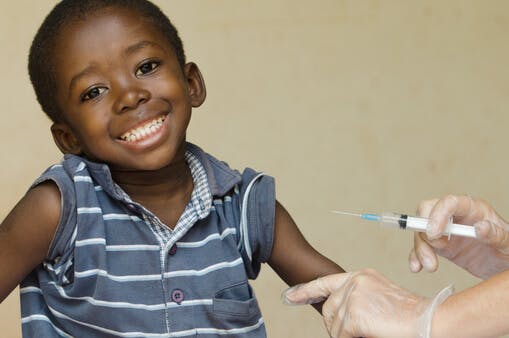Measles Vaccine

Question
When should the measles vaccine be given? How effective is it?
Dr. Greene's Answer
The measles vaccine is an effective vaccine in preventing measles. After 2 doses of the measles vaccine, over 99% of recipients will be immune to measles.
When Should the Measles Vaccine Be Given?
The initial dose of the measles vaccine is usually administered after a child is 12 months of age. The second dose is recommended at the age of kindergarten entry (i.e. age 4-6 years), but may be given any time 1 month after the first dose. Children between the ages of 2-12 years may also get the MMRV, which has an added varicella (chickenpox) component, thus decreasing the number of pokes at their appointments! Adults and teens not up to date with their two measles shots should get vaccinated with two shots, 28 days apart as a catchup immunization recommendation.
In areas where measles is very common, the vaccine can be given as young as 6 months of age, but protection is suboptimal. In these children, repeat vaccination at 12-15 months and 4-6 years is recommended. When the vaccine is not completely effective, it at least minimizes the length, and particularly the severity, of the disease. The measles vaccine is typically given later than other infant vaccines because there is some immunity transferred over by a mom to her baby, and this may lessen the effectiveness of the vaccine in the first 12 months after birth.
Why Should You Give Your Child the Measles Vaccine?
Measles has been a major cause of suffering and death at least since the societies of ancient China, Persia, and Rome. Measles epidemics ravaged Europe throughout the Middle Ages and attacked the Americas beginning in 1657. Before the measles vaccine became generally available in 1965, there were 3 to 9 million cases of measles in the United States each year. It was a common cause of pneumonia, blindness, seizures, brain damage, and death.
According to measles statistics from the CDC, from 2010 to 2020, the incidence of measles in the United States ranged from 63 to 1282 cases per year, and serious complications are far less common. The high of 1282 cases was in 2019 when there was a measles outbreak. The majority of cases were seen in children who were unvaccinated. In developing countries, however, measles is still widespread, infecting almost all unimmunized children by the age of 4. The mortality rate in unimmunized children is about 1-2 per 1,000, and blindness is common if the child is unimmunized and malnourished.
MMR is a live attenuated vaccine. This means there is a small amount of virus that causes a harmless infection in the recipient’s body after injection, which stimulates the body to develop an immune response. About 3 out of 100 people who have been vaccinated against measles may still get the disease; however, it is much less severe, and they are less likely to spread the disease to other people.
Resources
American Academy of Pediatrics., In Kimberlin, D. W.,et al. Red book: 2018-2021 report of the Committee on Infectious Diseases.


